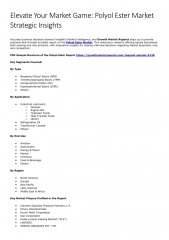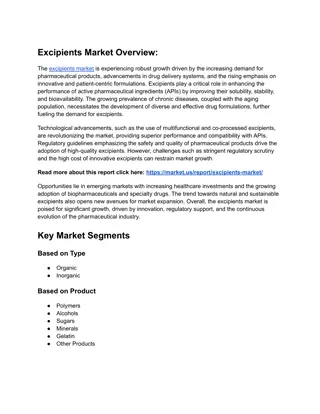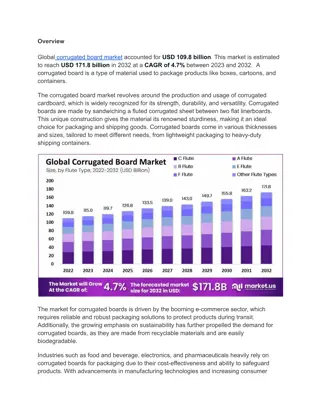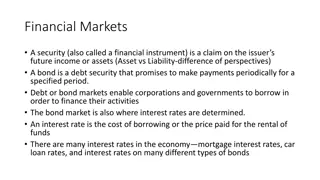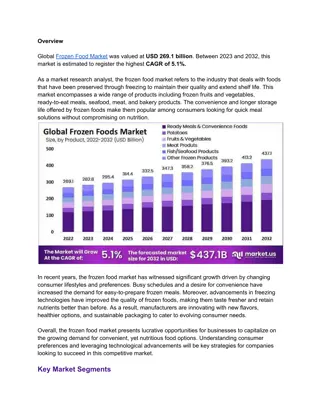
Effective Marketing Strategies: Segmentation, Targeting, and Positioning
Learn about the key steps in target marketing - segmentation, targeting, and positioning. Understand how to identify different consumer groups, select target markets, and communicate unique benefits. Explore various levels of market segmentation, including mass marketing, segment marketing, niche marketing, local marketing, and individual customer marketing.
Download Presentation

Please find below an Image/Link to download the presentation.
The content on the website is provided AS IS for your information and personal use only. It may not be sold, licensed, or shared on other websites without obtaining consent from the author. If you encounter any issues during the download, it is possible that the publisher has removed the file from their server.
You are allowed to download the files provided on this website for personal or commercial use, subject to the condition that they are used lawfully. All files are the property of their respective owners.
The content on the website is provided AS IS for your information and personal use only. It may not be sold, licensed, or shared on other websites without obtaining consent from the author.
E N D
Presentation Transcript
MARKETING SEGMENTATION ,TARGETING AND POSITIONING By :Mrs Sarika Singh FMS MLSU Udaipur
Marketers must adopt three steps of target marketing: (a) Identify and profile different group of consumers who differ in their preferences (segmentation). (b) Select one or more market to enter (market targeting) (c) For each target segment, establish and communicate the major distinctive benefits of the company s market offering (market positioning) (Source: Philip Kotler, Marketing Management)
LEVELS OF MARKET SEGMENTATION LEVELS OF MARKET SEGMENTATION a)Mass Marketing b) Segment Marketing c) Niche Marketing d) Local Marketing e) Individual Customer Marketing
Mass marketing Mass marketing refers to the strategy of targeting the entire potential customer market by means of a single marketing message. The marketing strategy used in this segmentation does not target the specific requirements or needs of customers. Mass marketing strategy, instead of focusing on a subset of customers, focuses on the entire market segment that can be a probable customer of a product.
Segment Marketing Segment marketing refers to a strategy where the company divides its target audience into different segments based on their unique needs and requirements. This way the company targets different messages to different segments, appealing them towards the unique features the product offers. This strategy creates product differentiation for customers with similar needs and preferences, based on their gender, age, income and location.
Niche Marketing This strategy of marketing focuses on a narrower customer segmentation. Customers may want or desire a product that is not met completely by the products offered in a market. When companies move forward and develop highly specialized products to offer these customers their specific needs, they offer distinct products in a market that caters to specific customer segments only.
Micro Marketing Micro marketing is that type of marketing strategy which tends to target a specific group of customers within a niche market.
BASES FOR SEGMENTATION BASES FOR SEGMENTATION
CRITERIA FOR EFFECTIVE TARGETING OF MARKET CRITERIA FOR EFFECTIVE TARGETING OF MARKET SEGMENTS SEGMENTS To be an effective target, a market segment should be (I) identifiable (2) sufficient (in terms of size), (3) stable or growing, (4) reachable (accessible) in terms of media and cost.
APPROACHES FOR SELECTING TARGET MARKETS: APPROACHES FOR SELECTING TARGET MARKETS: (a) Undifferentiated Approach (b) Concentration Approach (c) Multi-segment Approach
Undifferentiated Approach In the undifferentiated (or total- market) approach, a company develops a single marketing mix and directs it at the entire market for a particular product. This approach is used when an organisation defines the total market for a particular product as its target market.
Concentration Approach When an organisation directs its marketing efforts toward a single market segment through a single marketing mix, it is using a concentration approach.
Multi Segment Approach An organisation using the multi- segment approach directs its marketing efforts at two or more segments by developing a marketing mix for each segment.
Once the market has been segmented and attractive segments have been identified, the next task is to work within a targeted segment to position the product in the minds of the consumers and develop a marketing mix that will satisfy the consumer.
PRODUCT POSITIONING PRODUCT POSITIONING Product positioning is the creation of a clear image in the minds of consumers within the targeted segment about the nature of the product and the benefits to be gained from purchasing the product.
STRATEGIES TO POSITION PRODUCTS STRATEGIES TO POSITION PRODUCTS Position on Product Features Position on Benefits :Toothpaste advertising often features the benefit approach, as the examples of crest (decay prevention), close- up (sex appeal through white teeth and fresh breath), and Aquafresh (a combination of these benefits) illustrate. Position on Usage Position on User Position Against Competition

